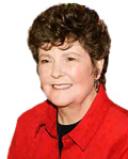Neuroscience
Seeing Without Sight
We all have the ability to see what we can't see.
Posted September 10, 2009
Teachers, mothers, and playground monitors aren't the only ones with eyes in the backs of their heads. It turns out we all have the ability to see what we can't see.
Neuroscientists used to think that vision is organized in a simple, hierarchical fashion. The brain's first-stop visual processing center was thought to receive an exact duplicate (in neural terms) of light patterns that fall on the retina of the eye. Then, through a series of steps involving ever-higher processing centers, the brain was thought to integrate discrete bits of information on angle, line, form, orientation, and hue until a conclusion could be drawn. For instance, the brain might receive neural signals that coded for red, round, shiny, and solid and then subsequently combine that information into recognition of an apple. In accordance with that "bottom-up" model, the brain's first input center for visual information was aptly named V1. Higher visual processing centers were named V2, V3, and so on.

But nothing is ever simple, and the hierarchical model is being challenged by new evidence. In one study, for example, vision researcher Scott Murray found that at least one optical illusion isn't the result of inaccurate higher order processing. The V1 actually "sees" the image incorrectly right from the get-go, perhaps because higher brain centers direct the misperception. Murray's is only one among a growing number of studies to indicate we don't see what's there. We see what we expect to be there.
Now, new research suggests that we can even "see" what we can't see. Christopher Striemer, Craig Chapman, and Melvyn Goodale at the University of Western Ontario studied a patient who became completely blind on his left side following a stroke. The man's eyes were normal, but his V1 was severely damaged. When asked to avoid objects while reaching for a target, the man could do so, even when the target was placed on his blind side. He couldn't see the obstacles, but somehow he knew their location. His ability surprised the patient as much as it surprised the researchers.
Striemer and his colleagues think that the man could avoid obstacles because his brain was processing information from his eyes through nonvisual pathways. In other words, the signal wasn't being received in the V1, V2, or V3, but in some part of the brain that bypasses vision altogether. Thus, we have a limited, but powerful, ability to see without seeing--to perceive the world around us without conscious sight. That capacity is limited, however. The system can't draw on memory. When the researchers delayed their patient's reach by a mere two seconds, his ability to avoid unseen obstacles was lost.
Studies like Striemer's point the way to new methods of rehabilitation for victims of brain injury or stroke. Physicians and therapists are now asking, Can undamaged parts of the brain be retrained to take over for the parts that were lost? Until recently, few treatment centers had tried the intensive rehabilitation for vision that is routine for the loss of mobility or speech in stroke patients. But earlier this year researchers at the University of Rochester Eye Institute demonstrated what vigorous visual exercises can achieve. The scientists worked with five patients who had gone partially blind after strokes. All five had damage in V1. The patients worked daily on a series of visual exercises presented on a computer screen. One of the exercises "forced" the brain to "guess" when dots were moving in an area of the visual field that the patient couldn't consciously see. After nine months or more of training, all the patients regained some vision, some of them even returning to such prestroke activities as shopping and driving.
So seeing what we can't see may help some of us learn to see again.
***
For more information, see these research studies:
Scott O. Murray, Huseyin Boyaci, and Daniel Kersten, "The Representation of Perceived Angular Size in Human Primary Visual Cortex," Nature Neuroscience (March 2006) 9(3): 429-34.
Christopher L. Striemer, Craig S. Chapman and Melvyn A. Goodale, "‘Real-time' Obstacle Avoidance in the Absence of Primary Visual Cortex," Proceedings of the National Academy of Sciences, Published online before print September 2, 2009.
Krystel R. Huxlin, Tim Martin, Kristin Kelly, Meghan Riley, Deborah I. Friedman, W. Scott Burgin, and Mary Hayhoe, "Perceptual Relearning of Complex Visual Motion after V1 Damage in Humans," Journal of Neuroscience (April 1, 2009) 29: 3981-91.
For a good diagram of the brain's visual processing centers, see Richard E. Cytowic, "Touching Tastes, Seeing Smells-and Shaking Up Brain Science," July 01, 2002.


